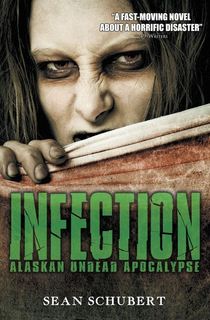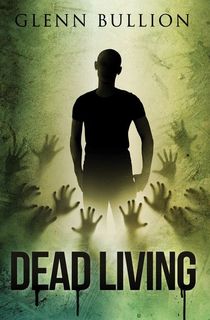Ever since George Romero changed the face of the zombie genre forever with Night of the Living Dead in 1968, zombie apocalypses in books, video games, and film have been caused by all sorts of things, from disease outbreaks to ancient magic, rogue satellites to fungal contamination. Romero’s flesh-eaters may have never gotten a canonical origin, even though the original film suggested a satellite as a potential culprit, but that doesn’t mean that other zombie outbreaks haven’t been attributed to just about every cause you can imagine over the years. Here are 10 of the most creative causes for zombie apocalypses in popular culture.
Inventive Zombie Apocalypses
Undead (directed by the Spierig Brothers)
Identical twin brothers Peter and Michael Spierig made their feature debut with this low-budget Australian zombie flick in which survivors of a zombie apocalypse find that aliens seem to be behind it all. It’s a wild twist that helped catapult the two brothers into at least some amount of fame, pushing them on to bigger things including the 2017 Saw sequel Jigsaw and the 2018 film Winchester, about the haunted Winchester Mystery House. While the actual source of the zombie apocalypse may not be the aliens themselves, their involvement alone is enough to get Undead onto any list of the most creative zombie outbreaks.

ZombieWorld: Champion of the Worms
Leave it to Hellboy creator Mike Mignola to pen one of the weirdest zombie apocalypses ever written. In this short, 72-page graphic novel drawn by Pat McEown, we are introduced to a reanimated Hyperborean priest who kicks off a zombie apocalypse in order to sacrifice the entire world to his weird, giant worm gods. We’ve got a medium who can manifest an ectoplasmic alternate body. We’ve got weirdly adorable Tintin-esque art by McEown. We’ve got a museum curator turned into a gloppy monsters. We’ve got mummies galore. We’ve got giant maggots destroying the Washington Monument. What more could you possibly need from your zombie apocalypse?

Infection
Called “a fast-moving novel about a horrific disaster” by the website 49 Writers, the first volume in Sean Schubert’s “Alaskan Undead Apocalypse” sees a zombie outbreak unfolding in the city of Anchorage, Alaska. This time around, the cause is probably the one most commonly used in modern zombie movies and novels—a deadly virus that turns people into flesh-eating, ravenous zombies. But the unique Alaskan setting helps to differentiate the end product from innumerable other zombie tales on the market. And besides, there had to be at least one zombie virus story on the list, right?
Night of the Creeps (directed by Fred Dekker)
Fred Dekker’s directorial debut is a heady cocktail of different influences, from 1950s sci-fi movies to detective pulps to raunchy college comedies to, yes, classic zombie films. While the aliens may not have been directly responsible for the zombies in Undead, they certainly are here, as a tube containing slug-like alien parasites gets loose in a college town. The parasites get inside their victims’ mouths and turn them into shambling zombies—no matter how long they’ve been dead. The basic idea of the slug alien zombies got re-used by Guardians of the Galaxy director James Gunn in his 2006 cult hit, Slither.

The Girl With All the Gifts
The discovery of the real-life fungus Ophiocordyceps unilateralis, which really can turn ants and other insects into zombie-like creatures via parasitic infection, led to plenty of fungal zombies in fiction. In video games, there are the fungal zombies of The Last of Us, which made their way onto television screens in the form of the HBO live-action series of the same name starring Pedro Pascal and Bella Ramsey. Around the same time, M.R. Carey was writing the short story that would become the novel The Girl with All the Gifts, which sees humanity all but wiped out by an outbreak of cordyceps fungus, and follows infected children who manage to maintain their mental faculties. It was made into a 2016 movie of the same name.
Return of the Living Dead directed by Dan O’Bannon
What if the cause of the zombie apocalypse was … Night of the Living Dead? That’s not exactly the premise of Dan O’Bannon’s classic zombie comedy, but it’s close. Return of the Living Dead posits a world where Night of the Living Dead was based on a true story, albeit one hurriedly hushed up by the U.S. government. The zombies in this case are created by a toxic gas that wound up being delivered to a medical supply warehouse by mistake. This leads to the gas getting loose a second time, causing a second outbreak that spreads and spreads and spreads …
Resident Evil from Capcom
Released in Japan as Biohazard, the Resident Evil franchise of video games became one of the most popular “survival horror” franchises of all time. It has spawned innumerable sequels, movies, comic books, toy lines, and more. As suggested by the Japanese title, the zombies in Resident Evil are caused by a virus, but what sets the series apart is the origins and background of that virus, which was developed intentionally by the Umbrella Corporation, and which can cause unstable mutations when directly injected into living tissue, leading to a series that is rife with both Romero-style zombies and other, stranger monsters.
The Middleman: The Flying Fish Zombification directed by Allan Kroeker
Originally created as a comic book by Javier Grillo-Marxuach, The Middleman was an unfortunately short-lived TV series in which the heroic Middleman trains a struggling artist named Wendy Watson as his replacement, and the duo face a variety of pulpy foes. In one episode, this includes a zombie outbreak, caused by venom from the Peruvian Flying Pike and spread to the populace through its inclusion in a new energy drink called “!!!!” These zombies have most of the usual traits of post-Romero zombies with one notable exception: Rather than human brains, they crave trout.

Dead Living
Let’s leave aside just how the zombies come to pass for a moment. In Dead Living by Glenn Bullion, the real mystery is why Aaron, who was born into a world filled with the living dead, seems to be immune. The zombies ignore him completely. They don’t bite, they don’t attack. It’s as if he was born to survive in this strange new world. Are his origins entwined with those of the zombie apocalypse itself, or is he simply the first of a new populace, one who can survive in a world that will never be the same?
Zombi 2 directed by Lucio Fulci
Before George Romero reinvented them with Night of the Living Dead, zombies in film had a very different vibe. Instead of flesh-eating, rotting ghouls, they were essentially somnolent drudges created by voodoo. There were plenty of such voodoo zombies prior to Romero’s film, but not so many afterward. One of the few movies to combine both styles of zombie was Lucio Fulci’s Zombi 2, which was conceived as an unofficial sequel to Romero’s Dawn of the Dead (released in Italy as Zombi). Here, a voodoo curse placed on a Caribbean island not only transforms the island’s dead into zombies, but also triggers an outbreak that manages to spread all the way to New York City.


